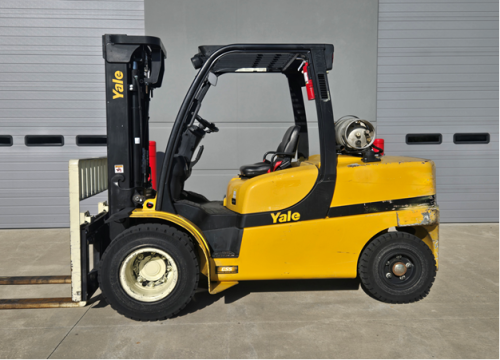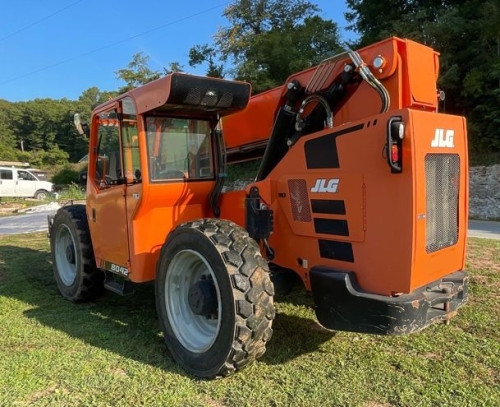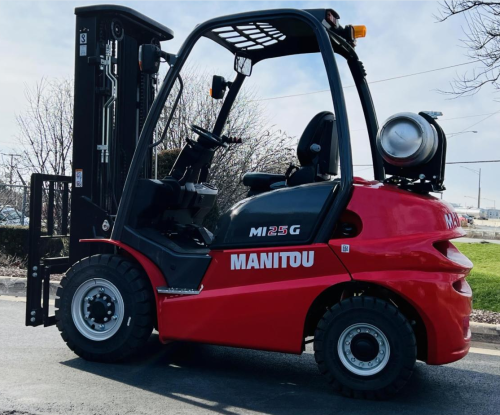Unlocking the Best Material Handling Equipment Deals in 2025
When it comes to moving big objects, using the right equipment can either make or break the rate at which your errands are performed in a safe way. Selecting the appropriate material handling equipment is critical whether you oversee or building something, moving something through narrow warehouse rows, or lifting something on a rocky terrain. The tools are shear variety, so it is important to understand what you require so as to identify the most suitable tool for your business.
It also details all considerations that must be made when purchasing material handling equipment including the types, the features most essential to the purchase, and information to keep in mind to make the most effective purchase. We aim at helping you navigate in the world of material handling equipment to allow you to select the ones that best suit your needs.
What is Material Handling Equipment?
Material handling equipment tools, and machines assist in the movement, storage, regulation, and protection of materials and items in the manufacturing, distribution and disposal processes. Such devices are highly needed as they help workers to be more productive, do less manual labour and keep the workers safe as they transport big or large items.
Key Features:

Types of Material Handling Equipment
1
Telehandler (Telescopic Handler)
A telehandler is a kind of machine that is helpful in both farm-based activities as well as construction. It also has a boom that can both swing and move up and down making it more useful to take things up high.
Why It’s Effective:
- Ideal for uneven or rough terrains, providing stability and lifting power.
- Capable of reaching high areas.
- Can be equipped with various attachments for additional functionality.
2
Straight Mast Forklift
A straight mast lift truck is a forklift that is simply designed with only 1 mast to move things upwards and downwards. You would commonly find such a forklift in warehouses and factories where there would not be much space and still the things would have to be lifted.
Why It’s Effective:
- Provides straight, vertical lifting for precise load placement
- Suitable for both indoor and outdoor operations.
- Offers a simple, robust design for heavy-duty lifting.
3
Industrial Forklifts
The industrial forklifts are applied and helpful in transporting items around in warehouses, distribution centers and factories. They also vary in size and shape, therefore, they can be applied in both light and heavy lifting.
Why It’s Effective:
- Wide range of sizes and load capacities for diverse applications.
- Equipped with attachments like pallet jacks or extendable forks.
- Offers smooth operation, even in high-demand environments.
4
Truck-Mounted Piggyback Forklift
A Truck Mounted Piggyback Forklift is a multi-purpose forklift attached to the backboard of a truck. This category of forklift can easily be transported and offloaded at any job location.
Why It’s Effective:
- Offers mobility and portability between job sites.
- Convenient for offloading materials directly from the truck.
- Ideal for remote or hard-to-reach locations where traditional forklifts cannot reach.
5
Rough Terrain Straight Mast Forklift
Heavy duty handling of rough terrain Straight Mast Forklifts is specially designed to lift heavy loads. They are ideal for use in a construction site and outdoors where stability is a significant need.
Why It’s Effective:
- Built for uneven, outdoor terrain where traditional forklifts may struggle.
- Provides high lifting capacity and stability on rough surfaces.
- Ideal for construction, agriculture, and other outdoor industrial applications.
Quick Comparison: Material Handling Equipment Types

Why Buy Used Material Handling Equipment?
Used material handling equipment is the right decision that a business can make to cut down on expenditure without compromising on quality of the machines. The primary benefits of purchasing used equipment are the following ones:
Top Reasons to Buy Used:
How to Choose the Right Material Handling Equipment for Your Project?
Selecting the right material handling equipment involves more than just height. Consider reach, capacity, terrain, and power options. Here are key factors to keep in mind:
| Specification | Why It’s Important | Typical Range |
|---|---|---|
| Platform Height | The vertical height your equipment can reach. | 10–60 ft |
| Reach | Additional horizontal reach for accessing distant areas | 20–40 ft |
| Lift Capacity | The total weight the equipment can safely carry | 3,000–12,000 lbs |
| Power Type | Determines the energy source for the equipment | Diesel, Electric, Gas, Hybrid |
| Drive Type | Diesel, electric, hybrid | Jobsite dependent |
| Drive Type | Ensures proper maneuverability on jobsite terrain | 2WD, 4WD |
Electric vs. Diesel vs. Hybrid Engines for Material Handling Equipment
Electric Engines
Diesel Engines
Hybrid Engines
How Much Do Used Material Handling Equipment Cost in 2025?
Prices can vary significantly based on factors like the type of equipment, age, condition, and usage hours.
Tips for Purchasing Used Material Handling Equipment
| Model Type | Height | Price Range |
|---|---|---|
| Electric Forklift | 10–20 ft | $8,000 – $18,000 |
| Diesel Forklift | 10–30 ft | $12,000 – $30,000 |
| Telehandler (Electric) | 30–60 ft | $20,000 – $40,000 |
| Telehandler (Diesel) | 30–60 ft | $22,000 – $45,000 |
| Rough Terrain Forklift | 12–30 ft | $20,000 – $50,000 |
| Towable Forklift (Electric) | 20–40 ft | $10,000 – $25,000 |
| Towable Forklift (Gas/Dual Fuel) | 20–40 ft | $12,000 – $30,000 |
| Truck-Mounted Piggyback Forklift | 10–20 ft | $15,000 – $35,000 |
Where to Buy Used Material Handling Equipment
There are three main places to buy used material handling equipment:
At National Lift Equipment (NLEQ), we inspect, recondition, and support every piece of equipment we sell. No surprises, no hidden issues.

How to Inspect Used Material Handling Equipment Before Buying
A proper inspection can save you thousands in repairs. Here’s our pre-sale checklist:
Best for:
Why Choose National Lift Equipment?
Buying material handling equipment is more than just getting a tried-and-true source. At National Lift Equipment we assist you in finding the right solution. We offer professional counseling, personal recommendations and a diverse selection of top-conditioned used equipment.






















